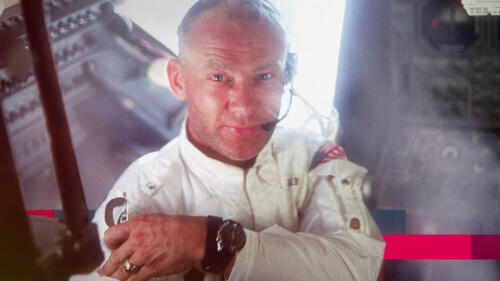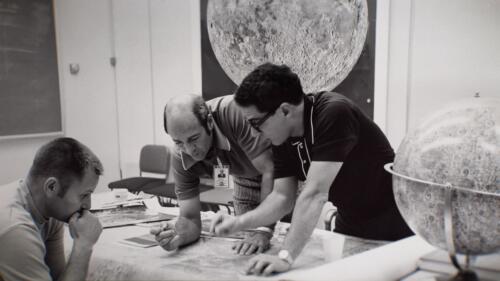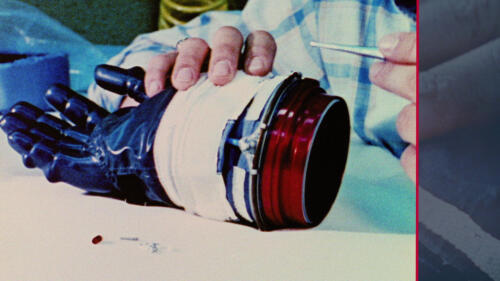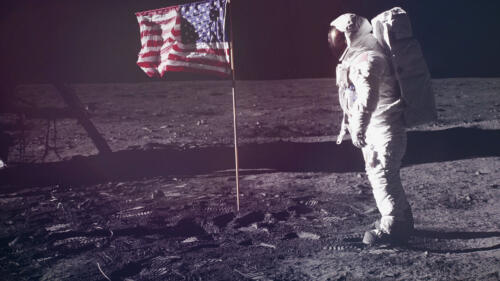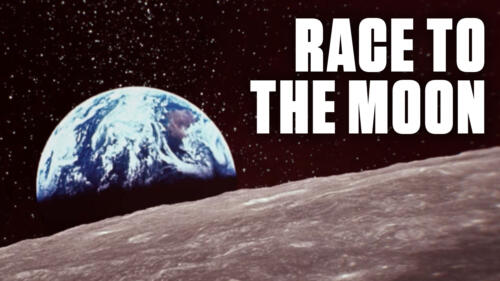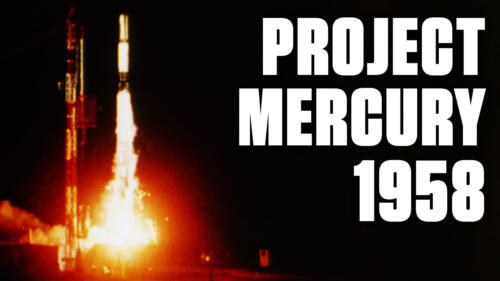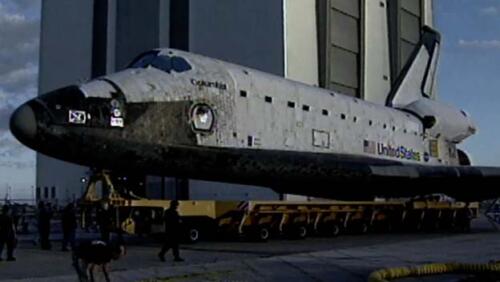Space Exploration
Space exploration, one of the greatest technological achievements in human history, has included the Apollo missions, the launch of the Hubble Telescope and the Space Shuttle missions, among others. These endeavors have been carried out by determined and courageous men and women.
Featured Overview
Author Charles Fishman talks about how the Apollo 11 astronauts discovered one strange thing about the moon, that it has a smell.
1:01m watch

Illustration by Eduardo Ramón Trejo. Photos from Getty Images.
Featured Overview
Author Charles Fishman talks about how the Apollo 11 astronauts discovered one strange thing about the moon, that it has a smell.
1:01m watch
Start Here

Yes, there was rocket science. But there were also extraordinary amounts of low-tech weaving, stitching and caulking.

These ground-breaking female mathematicians, engineers and scientists produced calculations crucial to the success of NASA's early space missions.

Since the Apollo missions began, space programs have offered a unique perspective on our home planet.

Seven lives were lost as communications failed in the face of public pressure to proceed with the launch despite dangerously cold conditions.
NASA’s Early Years
NASA's Early Years
In 1958, NASA was founded and quickly took up the goal of sending a man into Earth's orbit -- and safely returning him home. Seven men were chosen for Project Mercury, embarking on years of training to prepare for a journey no one had made before.
4:21 watch

3 Surprising Facts About the Moon Landing
Explore All Related Topics

NASA astronaut Bill Anders snapped the awe-inspiring view.

The moon is scattered with buggies, memorabilia and even human waste that astronauts left behind—some intentionally, others out of necessity—during the Apollo era.
Dr. Farouk El-Baz, an Egyptian American scientist and geologist, played a crucial role in helping NASA plan the Apollo program and deepen its understanding of the moon.
1:00m watch

In the late 1920s, astronomer Edwin Hubble pointed a mountaintop telescope at distant clusters in the night sky, and made a startling observation.

Neil Armstrong (1930-2012) was an American astronaut who became the first human to walk on the moon on July 20, 1969, as part of the Apollo 11 mission.

Buzz Aldrin is a former American fighter pilot and astronaut best known for his involvement in the historic Apollo 11 mission that first put a man on the moon.

The Apollo program’s sixth human landing on the moon ended an epic chapter in space exploration.

Since the Apollo missions began, space programs have offered a unique perspective on our home planet.

It was supposed to be the third-ever moon landing. It turned into a rescue mission.
Author Charles Fishman talks about secret recordings between JFK and NASA administrators.
1:01m watch
Author Charles Fishman discusses how critical parts of the Apollo program relied on handcrafted materials – even the computers!
1:01m watch
Author Charles Fishman reflects on how the echoes of the Apollo program are felt in today's space race, and what the future of space exploration has in store.
1:01m watch
Author Charles Fishman discusses how the Apollo 11 astronauts almost didn't bring a flag to the moon.
1:02m watch
Author Charles Fishman talks about how the Apollo 11 astronauts discovered one strange thing about the moon, that it has a smell.
1:01m watch

Until 1989, Russians claimed they were not trying to reach the Moon first and that the U.S. was in “a one-nation race."

The astronaut crew had to troubleshoot a series of problems throughout the historic 1969 flight.
Why did JFK promise to put a man on the moon? Was it just to beat the Soviets? Learn about the events that led to the creation of the Apollo Program.
4:51m watch
In 1958, NASA was founded and quickly took up the goal of sending a man into Earth's orbit -- and safely returning him home. Seven men were chosen for Project Mercury, embarking on years of training to prepare for a journey no one had made before.
4:21m watch

NASA worried the Christian ceremony might draw unwanted scrutiny.

Our fascination with alien life on the red planet began long ago.

The U.S.-Soviet space race had many notable successes, but some deadly catastrophes, too.

NASA's InSight mission, which will dig into the planet's core, is the latest to explore for signs of life on the red planet.

Seven lives were lost as communications failed in the face of public pressure to proceed with the launch despite dangerously cold conditions.

These aspiring astronauts were part of the little-known 'Mercury 13' program.

At the beginning of the U.S. space program, NASA's selection process sought men who weren't too tall, could handle pressure and isolation.

NASA’s first fatal spacecraft accident happened not in deep space but right on the launch pad.

These ground-breaking female mathematicians, engineers and scientists produced calculations crucial to the success of NASA's early space missions.

Check out seven things you might not know about John Glenn, the first American to orbit the Earth.

The famous comet named for astronomer Edmond Halley only passes by the Earth roughly once every 76 years, but its appearances have often played a surprising role in historical events.

Look back at the controversial decision to give Pluto the pink slip and shrink the solar system from nine planets to eight.

Explore 10 surprising facts about the most ambitious project in the history of the space program.

Seven years after becoming the first man to fly into outer space, Soviet cosmonaut Yuri Gagarin died in a plane crash under mysterious circumstances.

The Chinese spacecraft is the first to ever land on this unexplored area of the moon.

On Christmas Eve 1968, Apollo 8’s astronauts captivated the world with a live broadcast from lunar orbit.

Most are named after Roman gods and goddesses.

Though far less famous than later non-human astronauts, the first animals in space were a group of fruit flies, launched to an altitude of 42 miles at the tip of a V-2 rocket, developed and used by the Germans during World War II and later by American military scientists on February 20, 1947. The flies, […]

Get the lowdown on the telescope that helped revolutionize humanity’s understanding of the cosmos.

What was supposed to be the third space mission to land on the moon ended in disaster. But NASA learned from its mistakes.

On the 25th anniversary of the launch of Buran, look back at the one and only flight of the Soviet version of the space shuttle.

Earthlings have entertained many theories about the moon throughout history.

On the anniversary of Sputnik's launch, explore seven of the Soviet Union’s firsts in the history of space exploration.

As NASA’s rover Curiosity continues the quest to find life on Mars, explore five key events that piqued the public interest in the Red Planet.

The world celebrated, feared and commercialized the spectacular return of America's first space station.
On April 12, 1981, NASA launched the first space shuttle into orbit.
3:22m watch

As new research casts doubt on a leading theory about how the moon came into being, explore various lunar formation models.

Apollo 13 was the seventh manned mission in the Apollo Space program (1961-1975) and the third lunar landing mission, though the three astronauts aboard never reached the moon and scrambled to survive what became a hair-raising rescue mission.

In 1969, Michael Collins was part of the historic Apollo 11 mission in 1969. Known as the "forgotten astronaut," Collins remained in the command module as Neil Armstrong and Buzz Aldrin walked on the moon.
